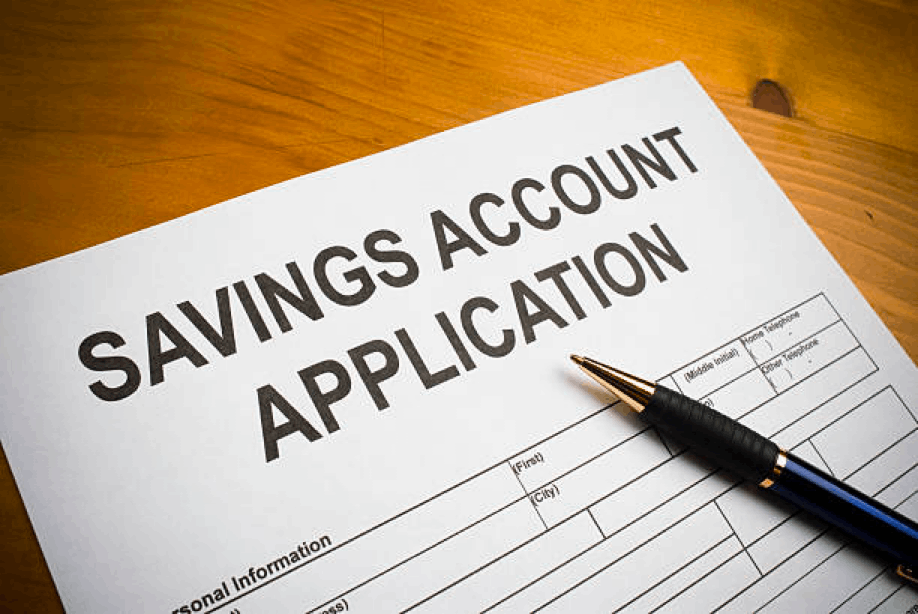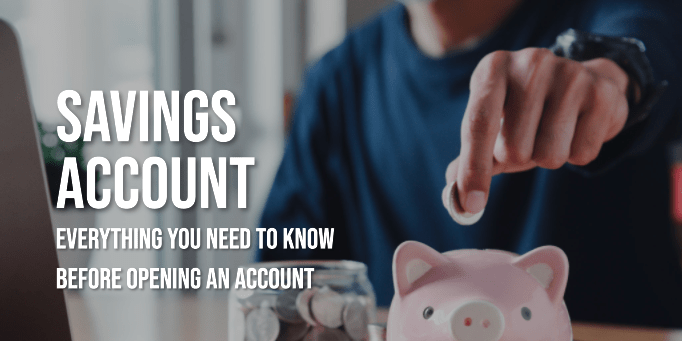Are you tired of living paycheck to paycheck, struggling to save money for the future? Do you find it challenging to set aside funds for emergencies or achieve your financial goals?
If so, a savings account might be the solution you’ve been looking for. In this blog post, we will provide you with a comprehensive guide on savings accounts, covering all the essential aspects you need to know before opening an account. Say goodbye to financial stress and hello to a secure and rewarding way to grow your savings.
What is a Savings Account?

A savings account is a type of deposit account offered by banks and credit unions that allows individuals to deposit and withdraw funds while earning interest on their balances. Unlike checking accounts designed for daily transactions, savings accounts are primarily intended for accumulating funds over time.
Benefits of a Savings Account
- Interest: One of the primary advantages of a savings account is the opportunity to earn interest on your deposits. Although interest rates may vary, it is an effective way to grow your savings over time.
- Liquidity: Savings accounts offer easy access to your money, allowing you to withdraw funds whenever needed. They provide a reliable source of funds for emergencies or unexpected expenses.
- Goal-Oriented Savings: Savings accounts can help you achieve specific financial goals, such as saving for a down payment on a house, a vacation, or an education. They provide a separate space to track your progress and ensure you don’t dip into the funds for other purposes.
How to Open a Savings Account?

Step 1. Research
The first step in opening a savings account is to conduct thorough research. Start by exploring different banks or credit unions to find the one that best suits your needs. Compare factors such as interest rates, fees, minimum balance requirements, and convenience of access (online banking, ATMs, etc.).
Look for institutions that offer competitive interest rates to maximise your earnings, and consider the fees associated with the account to ensure they align with your financial goals.
Step 2. Documentation
Once you have chosen a financial institution, gather the necessary documents required to open a savings account. These typically include identification documents such as a passport or driver’s license, and proof of address (such as a utility bill or bank statement). Preparing these documents in advance will streamline the account opening process and save you time.
Step 3. Visit the Bank
Schedule an appointment or visit the bank branch to open your savings account. Alternatively, some banks offer online account opening options, which can be convenient if you prefer a digital approach.
If you choose to visit the bank, bring along the required documentation and be prepared to fill out an application form. The bank representative will guide you through the process, verify your documents, and answer any questions you may have.
Step 4. Initial Deposit
Most savings accounts require an initial deposit to open the account. The amount may vary depending on the bank and the type of savings account you choose. Some institutions have minimum deposit requirements, while others may allow you to open an account with a nominal amount. It is important to be prepared with the necessary funds to make the initial deposit.
Step 6. Terms and Conditions
Before finalising the account opening, it is crucial to read and understand the terms and conditions of the savings account. Consider factors such as interest rates, fees, withdrawal limits, and any other relevant information.
Familiarize yourself with the rules and regulations governing the account to ensure that you are comfortable with them. If you have any questions or concerns, don’t hesitate to seek clarification from the bank representative.
By following these steps, you can confidently open a savings account, knowing that you have chosen the right institution, provided the necessary documentation, and understood the terms and conditions of the account. This careful approach will set a strong foundation for your savings journey and help you make informed decisions about managing your funds effectively.
Managing Your Savings Account

Regular Deposits
To make the most of your savings account, develop a habit of making regular deposits. Allocate a portion of your income specifically for savings and commit to depositing it into your account on a consistent basis.
You can set up direct deposit with your employer, establish automatic transfers from your checking account, or manually deposit funds whenever you receive income. By making regular deposits, you ensure that your savings grow steadily over time.
Track Your Progress
Monitoring your account balance and tracking your savings progress is essential for staying on top of your financial goals. Many banks offer online banking services that provide detailed statements and tools to help you manage your savings effectively.
Take advantage of these resources to review your transactions, track your savings growth, and identify any areas where you can improve. Regularly assessing your progress will keep you motivated and allow you to make adjustments if necessary.
Fees and Charges
Be aware of any fees associated with your savings account. Common fees include monthly maintenance fees, withdrawal fees, or minimum balance requirements. Familiarize yourself with the specific fee structure of your account and make sure you understand the conditions under which fees are charged. By adhering to the account rules and maintaining the required balances, you can minimise unnecessary charges and maximise your savings.
Review and Adjust
Periodically review your savings goals, account performance, and the overall suitability of your savings account. Life circumstances and financial goals can change over time, so it’s important to reassess your needs and make adjustments as necessary.
If your savings goals have evolved or your current account no longer meets your requirements, consider exploring other account options that better align with your needs. Feel free to consult with a bank representative or financial advisor to ensure you are making informed decisions.
By diligently following these management practices, you can optimise your savings account and progress significantly towards your financial objectives. Regular deposits, tracking your progress, staying informed about interest rates and fees, and periodically reviewing and adjusting your approach will help you build a strong financial foundation and achieve your savings goals.

Risks to Opening Savings Account
There are still certain risks associated with savings accounts. While savings accounts are generally considered low-risk investments, it’s important to be aware of the following risks:
- Inflation Risk: One of the main risks to consider is inflation. Inflation refers to the gradual increase in the prices of goods and services over time. If the interest earned on your savings account does not outpace the inflation rate, your savings’ purchasing power may decrease. In other words, the value of your money may need to catch up with the rising cost of living.
- Interest Rate Risk: Savings account interest rates are subject to change based on market conditions and the financial institution’s policies. If interest rates decrease, the interest you earn on your savings account may also decrease. This can impact your ability to grow your savings over time.
- Opportunity Cost: By keeping your money in a savings account, you may miss out on potentially higher returns that could be generated through other investment vehicles, such as stocks, bonds, or mutual funds. While these investments come with their own set of risks, they also have the potential for higher returns over the long term.
- Liquidity Risk: Savings accounts offer a high level of liquidity, meaning you can access your funds easily. However, withdrawal limitations or penalties for exceeding a certain number of withdrawals per month may exist. If you have an unexpected expense or need immediate access to a large sum of money, these restrictions can pose a challenge.
- Bank Failure Risk: Although rare, there is a risk of the financial institution where you hold your savings account facing financial difficulties or going bankrupt. In such cases, the funds in your savings account may be subject to certain protections offered by deposit insurance schemes. It’s important to research and understand the deposit insurance coverage provided by your country’s regulatory authorities.
FAQs
Q: Can I access my savings account online?
A: Most banks offer online banking services, allowing you to access your savings account, check balances, make transfers, and perform other transactions conveniently through the internet or mobile apps.
Q: Are there fees associated with a savings account?
A: Savings accounts may have fees, such as monthly maintenance fees, transaction fees, or fees for falling below the minimum balance. Review the account terms and conditions to understand the fees involved.
Q: Can I withdraw money from my savings account anytime?
A: While savings accounts offer liquidity, some banks impose limits on the number of withdrawals or transactions you can make in a month. Exceeding these limits may result in fees or restrictions.
Q: Can I link my savings account to my checking account?
A: Many banks allow you to link your savings account to your checking account. This linkage enables you to transfer funds easily between the accounts for convenience and to facilitate savings goals.
Q: Is my money in a savings account insured?
A: In many countries, savings accounts are insured by deposit insurance schemes up to a certain limit per account holder per bank. Check with your country’s regulatory authorities for specific coverage details.
Q: Can I have multiple savings accounts?
A: Yes, you can have multiple savings accounts. Some people choose to open multiple accounts to separate their savings for different purposes or to take advantage of different banks’ offerings.
Q: How often can I deposit money into my savings account?
A: You can deposit money into your savings account as often as you’d like, subject to any limits set by the bank or account type. You can make deposits through various methods, such as in-person deposits, electronic transfers, or direct deposits.
Q: Can I close my savings account if I no longer need it?
A: Yes, you can close your savings account if you no longer need it. Contact your bank to inquire about their account closure process, which may involve filling out a form or providing written notice. Ensure that all outstanding transactions are cleared before closing the account.


